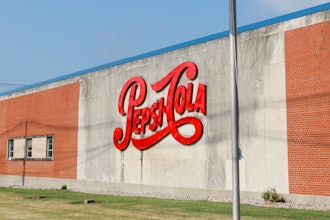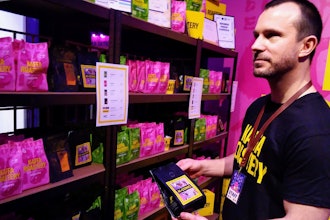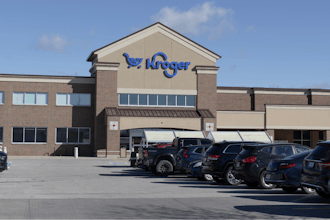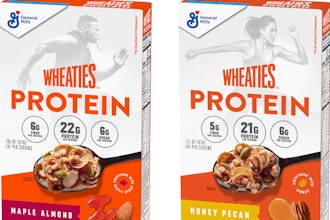Gone are the days when consumers idly select breakfast cereals and loaves of bread based upon the color and design of the packaging. Instead of a cheerful animal or catchy tagline, shoppers everywhere are scanning labels to understand the exact contents of the products they intend to eat and feed to their families — all the way down to where the basic ingredients are sourced.
This trend is not limited to coastal yuppies or Brooklyn hipsters — in fact, a recent report from Nielsen found that the majority (68 percent) of American consumers earning less than $20,000 a year are willing to pay more for sustainably sourced products, which underscores the notion of transparency within the global food supply chain becoming a priority across all demographics.
Spurred By Scandal
Anyone that had a cable news subscription in the early 90s no doubt recalls high-profile coverage of fast-food chains found to have served tainted meat to customers, which in some cases were fatal. While the “Mad Cow” craze has faded from public discourse, farmers, ranchers and food processors are still not immune to the occasional scandal that inevitably diverts all eyes to the fine print on the back of packaged goods.
With time, these incidents while less frequent, have grown increasingly complex — and placed further pressure on the supply chain for greater transparency. For example, this past March, a series of E. coli infections were reported across the country, which were quickly traced back to sales of romaine lettuce.
What makes this outbreak unique to previous incidents is that as the Food and Drug Administration (FDA) honed-in on the geographic source of the problem, Yuma, Arizona — the largest lettuce-growing region in the United States, investigators were unable to narrow the contaminated produce down to a single farm.
Quickly it was determined that contaminated lettuce was present in multiple growing operations, many of which were miles apart from one another, leaving officials scratching their heads, and consumers more concerned than ever before.
Ultimately the cause of the E. coli outbreak was linked to an irrigation ditch that connected the afflicted farms and has since forced the food safety community to re-evaluate the methodologies around diagnosing problems within the food supply chain. Likewise, in response to the outbreak, many of the impacted farms have banded together and even called to purchase a cattle-feed lot that’s adjacent to the irrigation ditch and suspected to be the source of the deadly bacteria.
Consumers Demand Transparency
Producers are gradually coming to the realization that transparency is not just a corporate talking point or marketing ploy, rather it’s an integral factor within consumer decision making. Charlie Arnot, CEO of The Center for Food Integrity, describes this shift in consumer demand: “Transparency is no longer optional. It’s a basic consumer expectation."
This change can largely be attributed to increased education by consumers who are gravitating more and more to healthier options and locally-sourced ingredients. According to a different Nielsen report, products labeled “free of additives and artificial ingredients,” grew 8 percent in 2017 while “all natural” grew 7.8 percent and “nothing artificial” grew 3.6 percent compared to the previous year.
Furthermore, there is a growing skepticism and distrust towards large food conglomerates — according to Nielsen only 44 percent of consumers trust industrially prepared foods; another factor that signals the need for greater transparency within the supply chain in order to maintain consumer loyalty.
"Is This Local?"
In addition to calorie count and specs on carbohydrates and added sugar, health-conscious consumers are increasingly factoring the origin of ingredients into their buying decisions, and savvy brands are responding.
Take the fast-casual chain of Mediterranean restaurants, Cava, in which upon entry of any of the 50 locations across the country customers will find plaques prominently displayed listing that particular location’s "sourcing partners." These displays tell customers the exact origin of different ingredients down to the individual towns and farms.
The same ethos can also be found while perusing the aisles at local grocery stores, where ingredient-origin is proudly displayed on the packages of espresso beans, produce and even craft beer.
The idea of localizing products has been around for ages as a marketing strategy — we all know that great cheese comes from Wisconsin and the some of the best orange juice from Florida. However, as the market demands increased granularity, producers must channel all of the tools at their disposal to capture and communicate down the supply chain.
Visibility Through Technology
Research conducted last year by Tungsten Network, in conjunction with Forrester, found that 84 percent of businesses have suffered from some form of supplier failure in the past two to three years. Supplier failure can often halt operations and shake the loyalty of both buyers and end-consumers. For this reason, it is vital that businesses nurture their supply chains and drive transparency throughout.
As data and automation become more pervasive, even previously low-tech farms are finding greater transparency into their own supply chains, which has the potential to be communicated to partners and customers. The digital transformation of inventory and production operations allows complete end-to-end real-time traceability, a vital component of effective supply chain management. From receiving materials to shipping completed products, and even invoicing and paying suppliers, producers can then easily provide the visibility that consumers now demand.
Given the negative, and potentially dangerous impacts that can come from blind-spots within our food-supply chain, which contrast so dramatically from the brand-loyalty that can result from providing maximum disclosure to consumers; stakeholders at all levels — from producers and processors to consumer brands — must approach transparency not as a feature within the supply chain, but a guiding force within the back-office overall strategy.
Stanley Chia is Global Vice President at Tungsten Network.






















